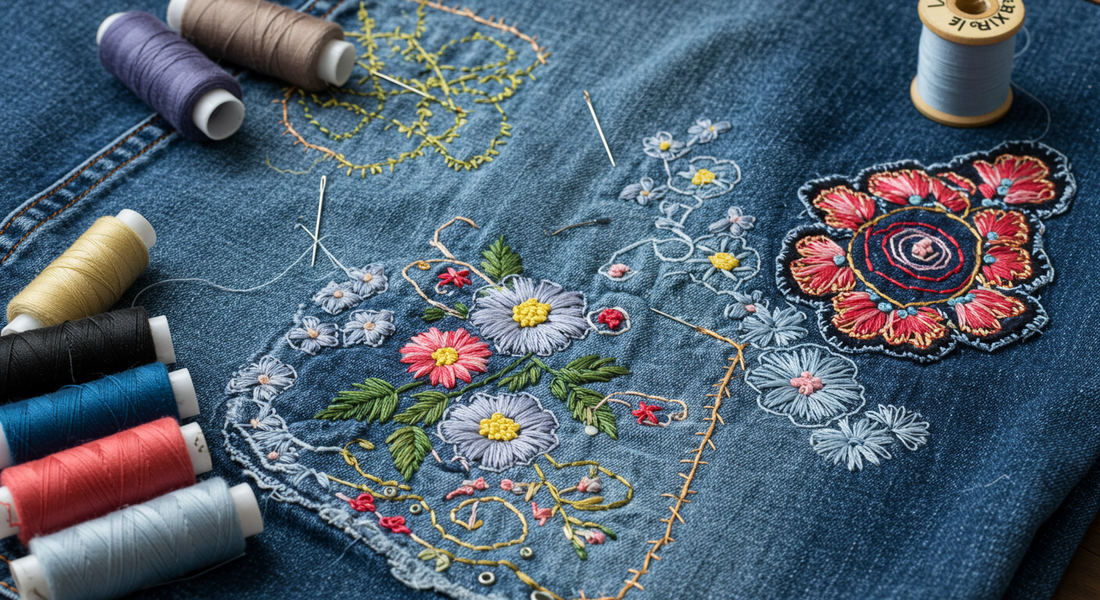
Repair & Visible Mending with Embroidery
Share
Blending Functionality and Beauty Through Stitched Restoration
In a world that often leans toward disposability, visible mending is a creative and sustainable alternative. Instead of discarding garments with holes, stains, or wear, we can repair them using embroidery—not only to restore, but to beautify. This practice honors the history of the item, extends its life, and turns flaws into features.
In this guide, we’ll explore how embroidery can be used for mending, techniques for different types of damage, and how to combine creativity with practicality in meaningful ways.

1. What is Visible Mending?
Visible mending is the practice of repairing clothing in a way that is purposefully noticeable and often decorative.
Why it matters:
- Extends the life of garments
- Adds unique, personal detail
- Reduces textile waste and supports sustainability
Rather than trying to hide wear and tear, you celebrate it with bold stitches, colors, and patterns.
2. When to Use Embroidery for Mending
Embroidery is ideal for:
- Covering stains or bleach marks
- Reinforcing thin fabric in high-friction areas
- Patching holes, tears, or moth bites
- Replacing missing threads in worn-out decorative embroidery
Use on:
- Denim, canvas, and cotton garments
- Tote bags, backpacks, and home linens

3. Basic Techniques for Mending with Embroidery
a. Patch + Embroider
- Place a fabric patch behind or over the hole
- Use a whipstitch or running stitch to secure it
- Embroider over the patch with decorative stitching (flowers, mandalas, shapes)
b. Darning with Stitch Patterns
- Create a woven or grid-like fill with running stitch or satin stitch
- Ideal for socks, sweaters, or woven shirts
- Try cross-hatching or layering for extra reinforcement
c. Freeform Fill
- Outline the damaged area
- Fill with French knots, seed stitch, chain stitch, etc.
- Let the damage guide your design

4. Creative Ideas for Embroidered Repairs
- Floral clusters growing over a tear
- Abstract shapes or “stitch clouds” covering stains
- Embroidered “scars” using bold contrasting thread
- Decorative borders reinforcing seams
You can even stitch words, quotes, or initials into the repair as part of the story.
5. Best Materials for Mending
- Strong embroidery floss (cotton or polyester)
- Stabilizer or interfacing for backing
- Iron-on mending patches for extra support
- Water-soluble pens or chalk for planning designs
Be sure to test threads for washability if the item is worn or laundered frequently.

6. Why It’s More Than Just Repair
Visible mending is a philosophy as much as a technique. It teaches us:
- Patience and attentiveness
- Appreciation for imperfection
- A creative way to connect with the objects we use daily
Mended clothes tell stories—about their wearers, their journeys, and the care they’ve received.
Final Thoughts
Repairing with embroidery gives your garments new life, turning flaws into focal points. It’s practical, meaningful, and an expressive craft in its own right. Whether subtle or statement-making, each stitch honors the past while reinforcing the future.